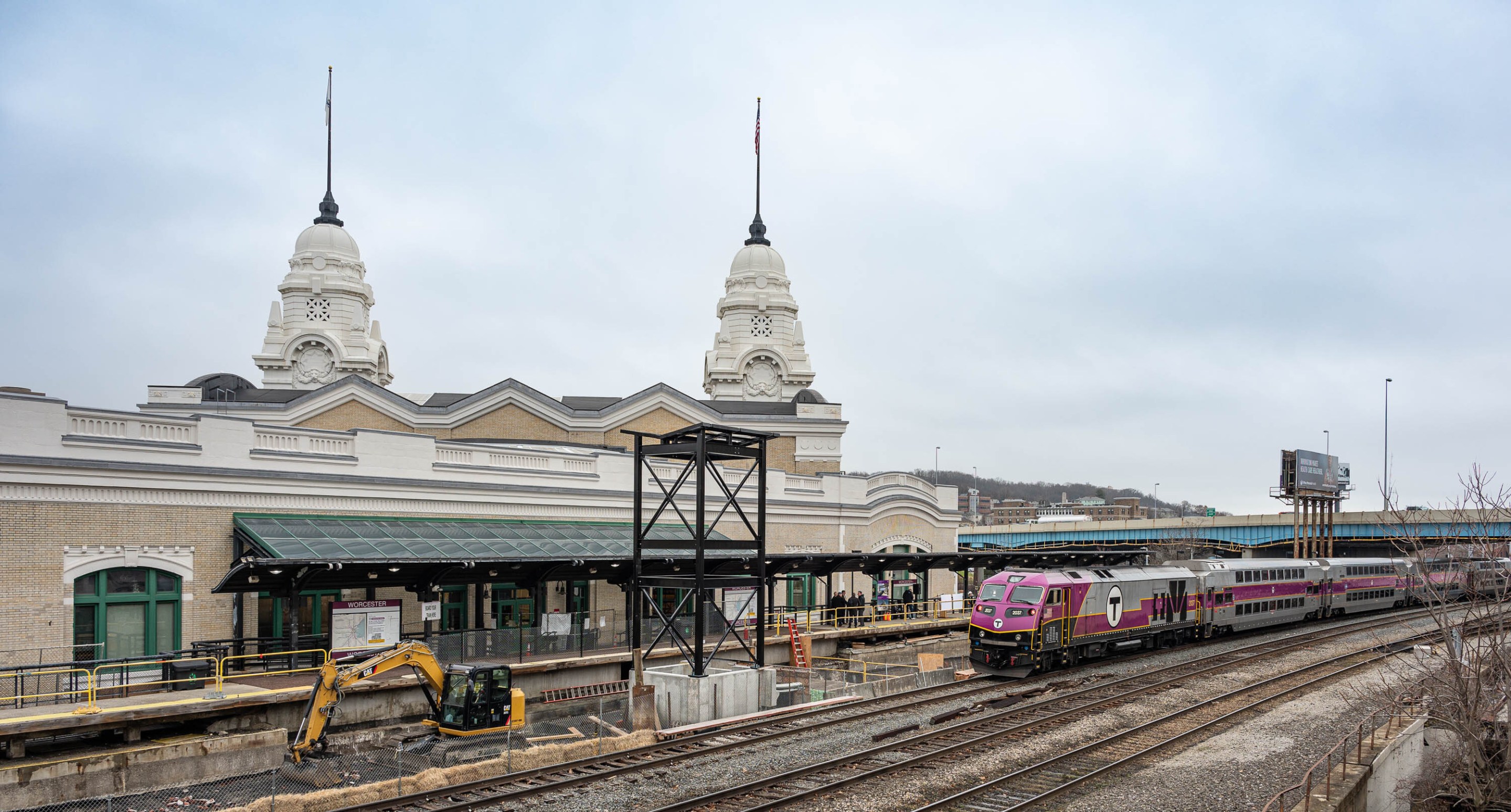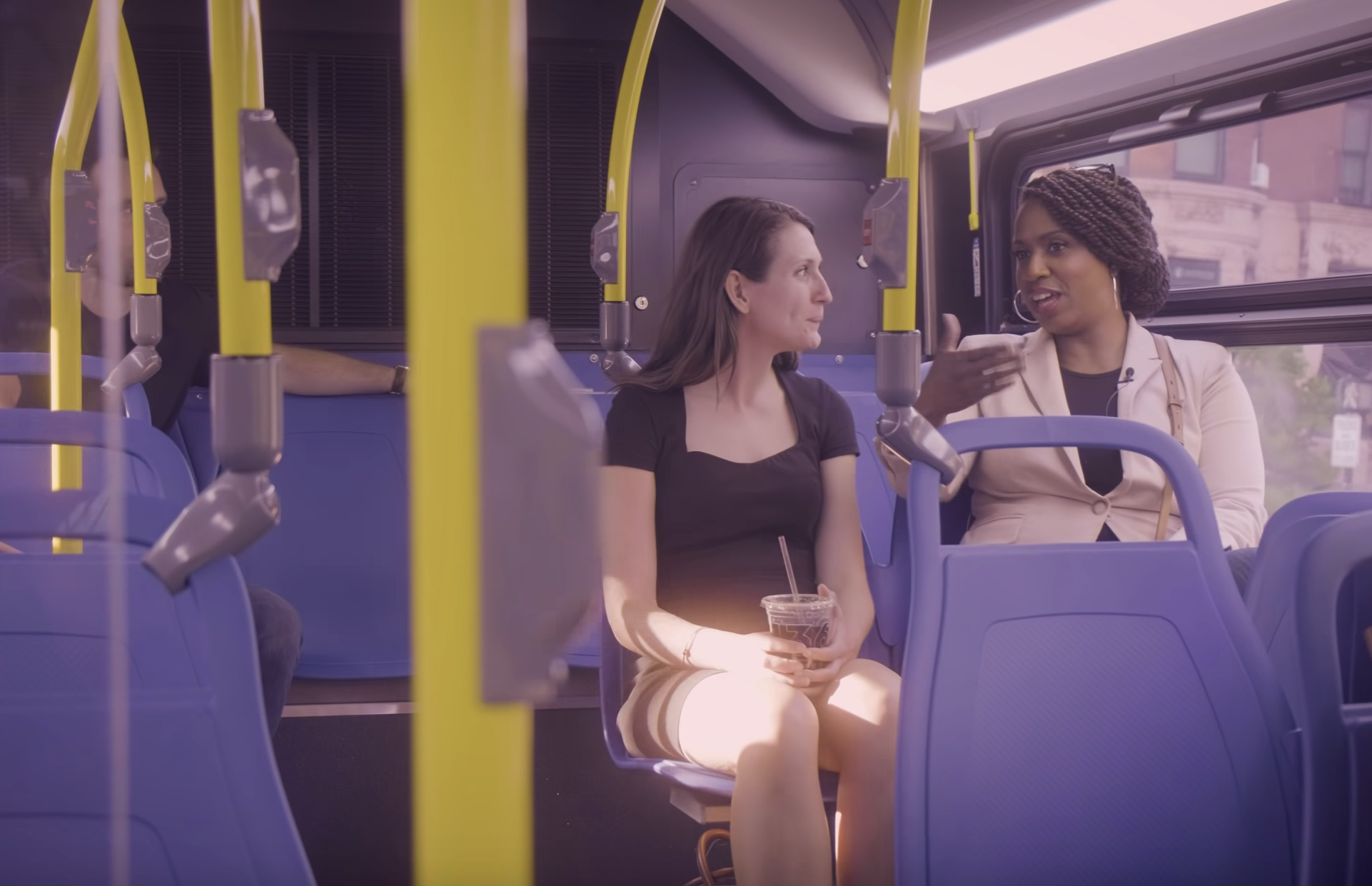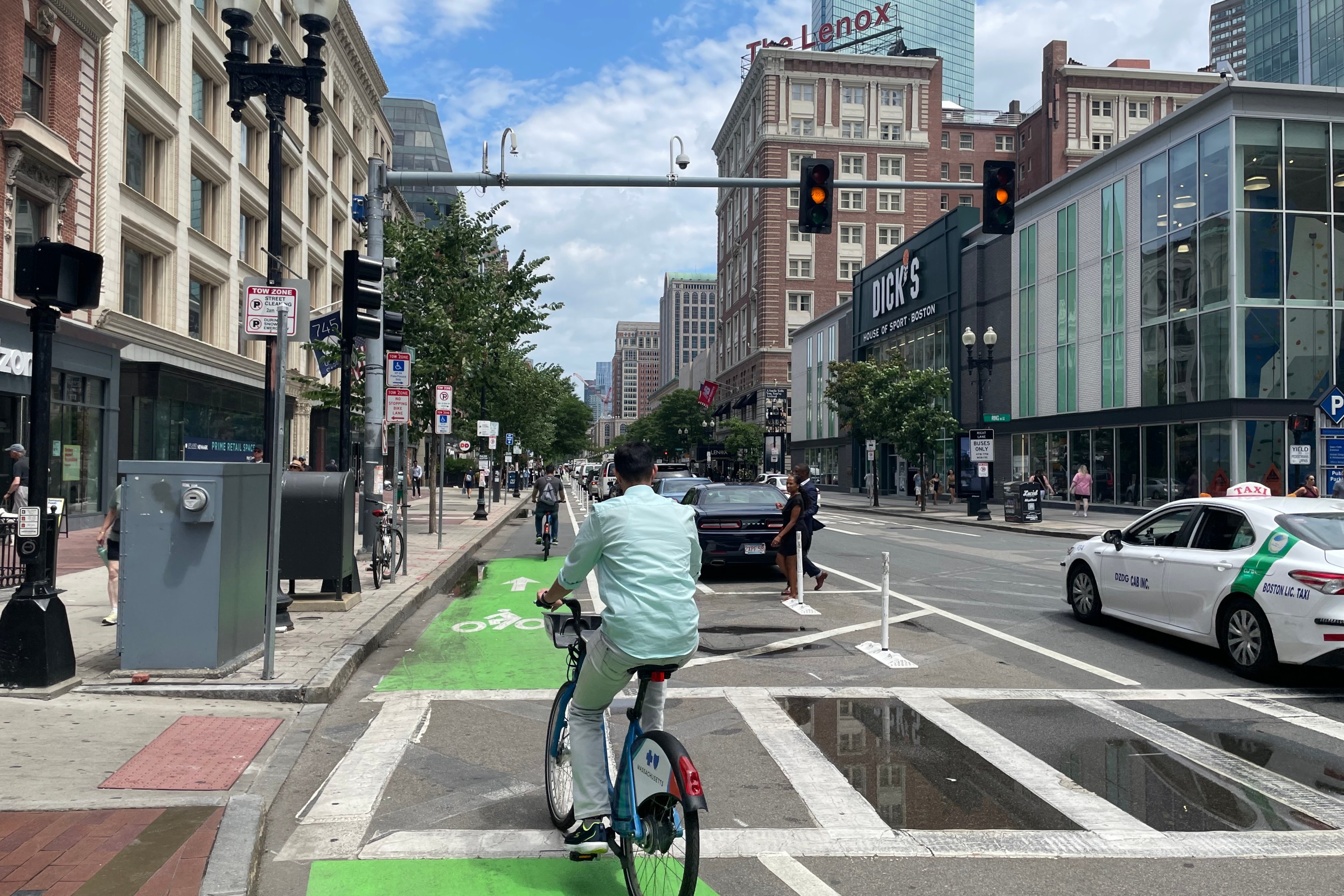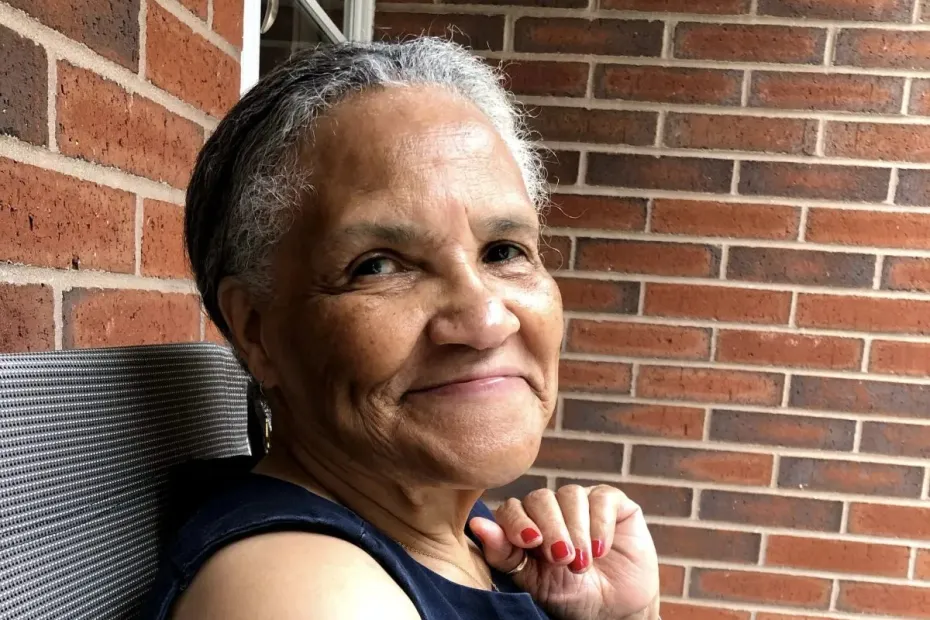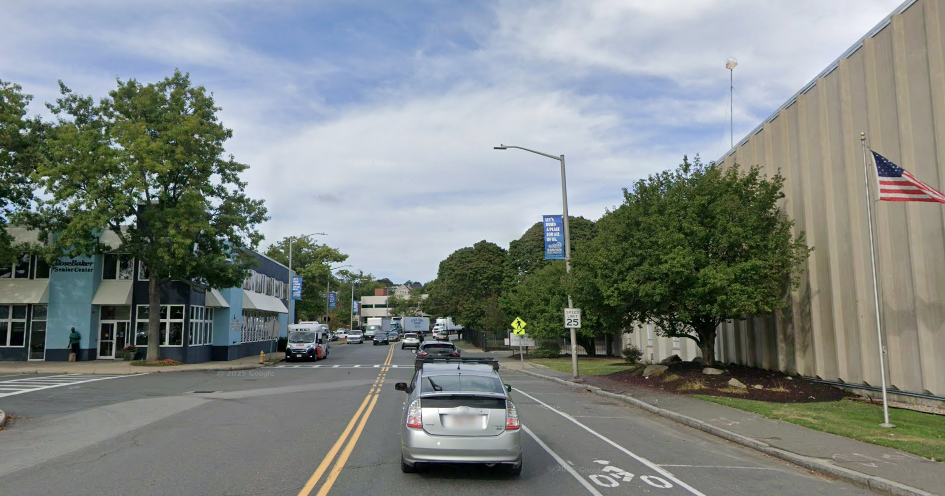
Within the next few years, the MBTA plans to start running shorter, 4-car trains on the Worcester Line – but the reduction in capacity in each train would be offset by simultaneous plans to run more trains, with departures every 30 minutes, between the Commonwealth's two biggest cities.
StreetsblogMASS learned of the agency's service plans for the Worcester Line after reporting last month on plans for the proposed Newtonville replacement station.
The T is planning to build that new station with shorter 400-foot platforms, which would only be long enough to allow boarding on four commuter rail cars at a time.
Most commuter rail boarding platforms in the MBTA system – including new platforms currently under construction along the Worcester Line in Natick Center and downtown Worcester – are 800 feet long, and many commuter rail trains today carry 5 or more cars.
FTA rules: stations have to provide access to the entire train
One of our readers tipped us off that the T's plans for a shorter 4-car platform at Newtonville would clash with the Federal Transit Administration's accessibility rules, which require new federally-funded stations to include "access to all accessible cars available to passengers without disabilities in each train using the station" and "level-entry boarding to all accessible cars in each train that serves the station."
When we asked the agency about this conflict, an MBTA official speaking "on background" responded that the T "plans to adopt a shorter 4-car BEMU (battery-electric multiple unit) consist, which would put every door on a 400-foot platform."
The official added that the T has already "received permission from the FTA to construct short high-level platforms at North Wilmington and Lynn Interim stations, and we are looking to expand the concept elsewhere on the system where accessibility improvements are needed and where we are planning to operate shorter trains in the future."
More frequent service offsets crowding concerns
Four-car trains would carry fewer people than today's 5- and 6-car trains, even if the MBTA follows through with plans to replace all of its older single-level cars with higher-capacity bi-level coaches.
The new bi-level cars have seating for 179 passengers, while older single-level coaches seat around 120 passengers. That means that a 4-car train of new bi-level cars can seat about as many people as a 6-car train made up entirely of single-level coaches (and most trains today carry a mix of single- and bi-level cars).
To help offset the reduction in seats per train, the MBTA is also making plans to start running more trains, more frequently – every 30 minutes – within the next one to two years.
"We’re looking to move to 30-minute train service on the Worcester main line in the next year or so," said Lynsey Heffernan, the MBTA's Chief of Policy & Strategic Planning, during a discussion of a proposed new rail layover facility in Allston at a December 5 meeting of the Boston Region Metropolitan Planning Organization.
Heffernan later clarified that running 30-minute service on the Worcester Line likely wouldn't happen until 2026, and that the agency's ability to run more trains would be contingent on "infrastructure investments along the course of the line that we’ve been doing."
Current Worcester Line schedules have trains arriving every 2 hours during the middle of the day and every 30 to 45 minutes during peak commuting hours.
Riders, advocates weigh in
Regular Worcester Line rider Keeley Peck told StreetsblogMASS that she likes the idea of having more frequent trains, but expressed concern that the shorter trains might not be able to accommodate all of the line's commuters, especially during rush hours.
"It'll depend on the number of seats," Keeley said. "I usually get on at Framingham... there's one rush-hour train that comes in from Ashland and it's already full, I'd often have to stand on the whole ride into Boston."
Janet Cheung, Program Assistant for Regional Rail at TransitMatters, told StreetsblogMASS that "with shorter platforms and shorter consists, it's important that the legislature fund operations to allow the MBTA to run more frequent service to support demand. A four bi-level coach consist still has lower capacity than the current six- to seven-car combination consists, so headways closer to 15 minutes are crucial to sufficiently serve riders."
